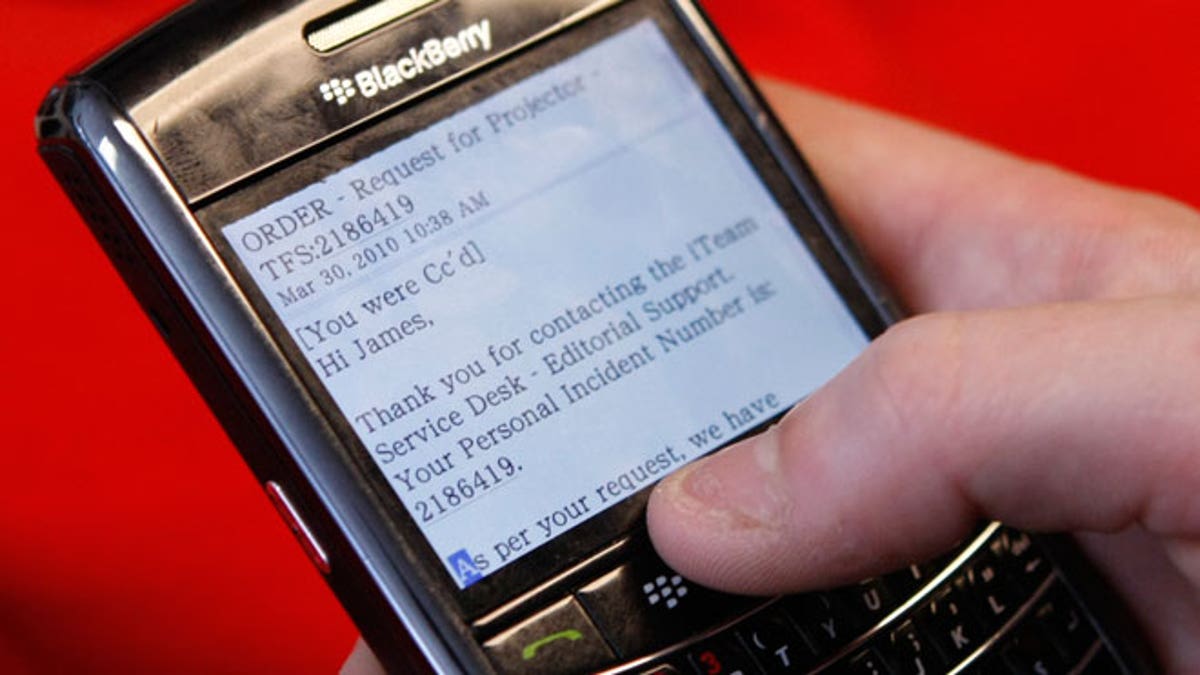
(Reuters)
A recent study by the McKinsey Global Institute found that the average knowledge worker spends 28 percent of the work-week either writing, reading or responding to email. You probably know some colleagues who spend more than half of each day dealing with the influx.
A high volume of email can make you feel overwhelmed and overloaded. And a cluttered inbox is a major productivity killer. Follow these 9 steps to tame the daily barrage. Trust me, you can do this!
Then, you can spend a few more hours a week not glued to a glowing screen – or perhaps glued to a glowing screen for a more entertaining reason.
1. Send less email
Sounds obvious, but the more email you send, the more you'll get. Look for opportunities to use another form of communication that cuts down on the noise.
Could a quick IM chat, phone call or walk down the hall answer your question or resolve the issue? Face-to-face communication is better when you need to make a point or debate which direction to take. It's also the only choice when the subject is touchy. With body language, there's less chance that your tone will be misconstrued.
It's also a good idea to call an impromptu meeting if it looks like you're headed for a confusing three- or four-way email conversation. Chats, on the other hand, are good when just a few words will do.
2. Send better email
The first key to a better email is crafting a compelling Subject title. In the body of your message, be clear and concise. Anticipate the recipient's questions.
[pullquote]
If you often get email responses that start with "To clarify…" that's a clue you're not writing plainly or including enough information.
Remember that people scan rather than read email. Draw attention to important ideas with boldface type. Use a headline, sub-headlines and lists. Don't send long blocks of gray text. Emails are meant to be brief and punchy.
And whatever you do, don't forget the importance of proper manners. I made a video to help you brush up on your email etiquette. Watch it now http://www.tvkim.com/watch/716/kim-on-komand-email-etiquette. And it's a great idea to send it to others who might need a little reminder.
3. Create templates to save time
Are a lot of the messages you send to clients and colleagues similar in nature? Create templates. They'll save you loads of time over starting from scratch. Templates can be customized on the fly so they don't read like impersonal form letters. You can call up the right one with a single keystroke.
4. Unsubscribe
Over the years, you've probably signed up to receive a lot of e-mail blasts from companies you don't even do business with anymore. Unsubscribe from them.
Consider disabling email notifications from LinkedIn, Twitter and Facebook. Check those sites on your own schedule. I'm guessing you'll find you don't really miss the constant pings.
News is more important to some people than others. If a lot of news bulletins pile up in your inbox over the course of a day, start using an RSS reader.
5. Automate
Every major email program lets users set up filters and rules that can give incoming messages priority labels and colors, then divert them to folders other than your inbox.
For example, you can route email that contains your boss' name or the domain of an important client to a folder marked Urgent. Funnel routine messages to a Read Later folder.
6. Bulk process email and take action
Try to avoid checking messages as they come in or at times when you don't really have time to write and send a reply.
Instead, process email for 5-10 minutes each hour. Experiment and learn what's best for you. But try to cut back. If you can stand it, limit the email purge to twice a day. Then check only your newly created "urgent" folder on an hourly basis (see step 5, above.)
For the rest of your non-urgent email, it's reasonable to respond within a few hours. You won't offend those folks if you don't answer immediately.
7. Turn off email notifications
It's more distracting than you realize and it makes everything seem much more urgent than it is.
8. Stop thinking of your inbox as a storage system
It's a delivery system. Read and respond, then delete or archive. This will help you stop encountering and re-reading the same and similar messages repeatedly.
9. Divide messages from tasks
A lot of emails are tasks in disguise. Get errands and assignments out of your inbox and onto your to-do list where they belong. There are many mobile apps, Web-based solutions and computer desktop utilities that will help you create and manage to-do lists.
Kim Komando hosts the nation's largest talk radio show about consumer electronics, computers and the Internet. Get the podcast or find the station nearest you at www.komando.com/listen. Subscribe to Kim's free e-mail newsletters at www.komando.com/newsletters. Copyright 1995-2012, WestStar TalkRadio Network. All rights reserved.




















